Braces: How Are They Made?
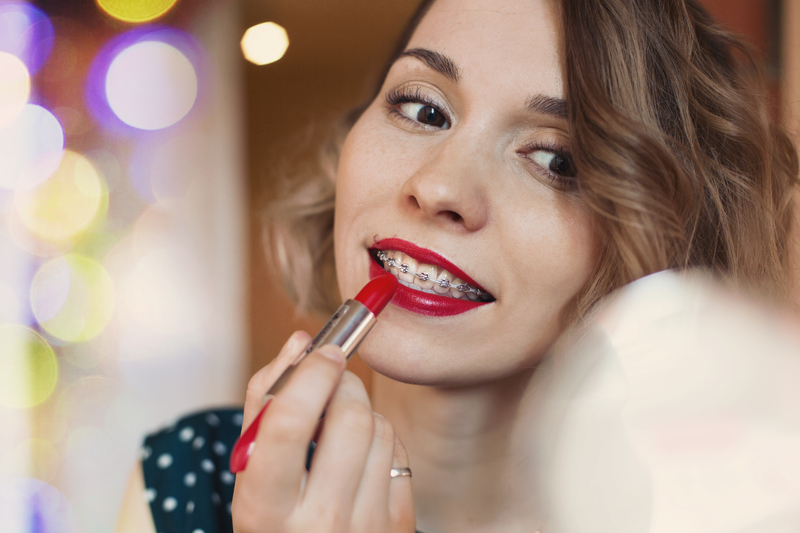
You may wonder what the differences are between metal, ceramic, and lingual braces and how they compare to Invisalign treatment. All are a bit different and they are both made and worn differently. Braces are made from various materials and designed specifically for your mouth.
Metal Braces and Your Teeth
You’ve likely seen someone wearing metal braces and you know that they make your teeth straighter. But how? It takes a bit of science and the right orthodontic appliance to make that beautiful smile happen. With the most common type of braces—metal braces—you have a stainless steel material that is shaped into specific orthodontic parts that will all go together in your mouth. Often those parts are molded and shaped in a special lab that then ships those parts to orthodontists.
Labs will even do custom-made brackets and wires for patients when the need arises. However, most braces have a specific design like metal braces do. Metal braces have several parts that include:
- Brackets: These stainless steel pieces are those little squares bonded to the middle of each tooth. We use a special bonding glue that will stay on your teeth for the entire duration of your treatment, but will come off easily with the right orthodontic material. Your brackets are small anchors that hold a wire in place. They will have tiny rubber elastics placed around them to protect your teeth and prevent stuck food.
- Archwire: This metal wire will pass through the brackets on each tooth, all the way to the back of your mouth. Many patients have a bracket that wraps around the back molar that stabilizes this archwire. The wire will follow the curve of your jaws in an elongated have circle. When a thicker archwire is placed or when this archwire is adjusted, it can help move the teeth into place because of the force placed on the brackets.
- Ligature Elastics: These are the rubber elastics we mentioned. The elastics are what keep the archwire sturdy so it can straighten your teeth.
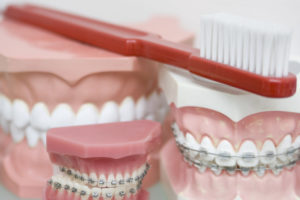
How Teeth Straighten
Your archwire will be adjusted very slightly at your orthodontic appointments every 4-6 weeks. That slight adjustment may seem very small, but it’s what your mouth needs to make a true, straightening change. The appliance is not the only thing changing your teeth into a straighter position. Your teeth are the hardest substance in the body and can even be harder than many metals. Straightening them would seem very difficult, when it’s not. It simply takes time.
Your teeth can take a ton of force from chewing, biting, eating, talking and other actions because they are rooted into your jawbone. However, the jawbone is much weaker than the teeth are. So why doesn’t your jawbone get breaks in it when you chew hard things? You have something called the periodontic ligament that is around every tooth root as it goes into your jaw bone. All those ligaments are shock absorbers for your jaws when you chew, minimizing the force your jawbones take. These are key to straightening the teeth.
When orthodontic appliances are on the teeth, they will apply a very slight pressure to your teeth and to the periodontic ligaments that surround them. When that pressure is constantly there, your body will produce acids in the jawbone area that will break down tiny parts around the teeth. With new space created, the teeth can shift. Your body will naturally deposit more minerals in areas that have changed to strengthen the jawbone once more. Over time, your jaw is literally breaking itself down on a microscopic level and then rebuilding itself. That is why orthodontic treatment takes months. However, the result is worth it.
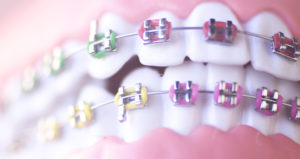
Ceramic and Lingual Braces
Ceramic and lingual braces are very similar to traditional metal braces, but are made a bit differently. Lingual braces are also a metal braces type, and most types are made from stainless steel in a lab. There can be other types of metal used or a combination of metals. These braces will have brackets and wires just like traditional metal braces, except that they will be placed on the back of a patient’s teeth.
Because of placement, children are not usually candidates for lingual braces because of the size of the teeth. Dental impressions of the back of the teeth are made so that metal coverings can be made for the tooth backs, which is a bit different than traditional metal braces. More anchoring is needed with lingual braces, and this is how it is done. The metal material will cover the entire tooth back with a bracket in the center of the tooth, and each is placed individually when a patient gets their appliance. The archwire works the same as other braces.
Ceramic braces are very similar to metal braces in their design and how they work. However, they are made from ceramic material, which is naturally white already. This makes the braces blend in with the teeth more, and the metal can even be frosted to blend in with whiter teeth.
Invisalign: Customized to the Patient
Invisalign treatment is an orthodontic option that is vastly different than your other options. The most noticeable difference is that there is no metal or ceramic material in your appliance. A patient will have digital images taken of their mouth. With that image, custom aligners are made that a patient will switch out each week. These are a type of plastic material patented by the Invisalign company. It’s a strong enough plastic to cause the same type of shifting you want your teeth to do. Aligners fit snug in the mouth as they are custom made, are switched out each week, and must be worn 20-22 hours of the day. If you are interested in any of these types of braces or want to see how the braces are put on a patient, call Belmar Orthodontics today at (303) 225-9016 with your questions!
Dressing Up Your Smile During the Holidays

The holidays are here, which means parties, dinners, photo opportunities and more. Now is a great time to make your smile shine, and you can do that through orthodontic treatment. If you’re smile is lack-luster, consider our four orthodontic options that can help you have a straighter smile. For those already with braces, you can dress up your brackets with bright colors to reflect the season. Use these tips for getting a more beautiful smile with braces and having that show in your holiday snapshots this year!
Dress Up Your Smile with Orthodontics
The higher number of holidays during the winter season is believed to be because of the many pagan festivals that surrounded the Winter Solstice many years ago. That solstice happens in the third week of december, where there is Christmas, Hanukkah, New Years and other holidays all happening. With all those holidays and the gatherings that come with them, it’s likely to mean many opportunities for photos and showing off your smile. You want that smile to impress.
Studies show that people that straighten their smiles often feel more confident than those who don’t. That confidence can be visible even while you are currently getting orthodontic treatment. Straight teeth are so important to people that 87% of people are willing to forego something they want for a year or more to be able to get braces. If you have braces, not only is it something to be proud of, but something to be admired. If you don’t have braces, getting them is a great way to give yourself an amazing gift just in time for the holidays.

Your Treatment Options
In the past, metal braces were your only option. However, you have many cool options today that you can gift yourself such as:
- Traditional Metal Braces – These are the classic metal bracket and wire option that is most commonly chosen by patients. Patients who chose this option come in to have their wires tightened at each appointment.
- Ceramic Braces – These braces are a close cousin to metal braces. They have the same bracket and wire design of metal braces, except that they are made out of ceramic material. This helps decrease demineralization during your orthodontic treatment. Ceramic material is also naturally white, helping these braces to blend in with your teeth more than metal would.
- Lingual Braces – These are metal braces that are placed on the back of your teeth. Instead of just a square bracket, the metal must be custom-made to the shape of the back of your teeth. This is a discrete option that adults and teens love.
- Invisalign Treatment – This is the most invisible option available to our patients. Invisalign is a series of transparent aligners that you wear at night and throughout the day. You can remove them for eating, playing sports, cleaning your teeth and more.
If You Already Have Braces
Maybe you already have braces. You can still make your smile wow in pictures by taking care of your smile. If you have metal or ceramic braces, our patients love to get colored bands that reflect the colors of the holidays. You can make your bands green and red for Christmas, blue and white for winter or any color you would like. Colorful bracket bands are just one way you can dress up your smile.
If you already have braces, then you have already started on your journey to a better smile. Orthodontic treatment can correct mild to severe issues with bite and alignment, and can help correct speech impediments. It can bring the teeth and jaws into proper position, reducing your risk for oral health diseases such as tooth decay and gum disease. Straighter teeth are teeth that are easier to clean and less likely to have breaks and fractures from uneven mouth pressure.
However, if you want your smile to dazzle in photos and at holiday get-togethers, you have to take care of it. The best way to do that is by brushing and flossing your teeth. Those two simple steps should be dones several times a day to keep your brackets clean and your teeth polished. Patients should brush 3 times a day or more to dislodge food and to clean the teeth after meals. Flossing should be done 1-2 times a day. Even though it takes a bit longer to do, don’t skip this step! If you do, you miss cleaning 40% of your tooth surfaces that can leave them open to decay, erosion and staining. Those are not things you want in a holiday photo.

Better Health for the New Year
The end of the year is a time to start making goals for the new year. One of those goals can be focused around having better health in the new year. Many people don’t realize just how connected oral health is with overall health. Countless chronic conditions can become more mild or they can intensify depending on how well you are taking care of your oral health. For example, if you have diabetes, not taking care of your teeth and gums can lead to oral infections that are really hard to battle because you have diabetes. Your body is less able to fight those infections and the infections can spread, worsening your condition.
However, if you do the basics of brushing your teeth, flossing and visiting your dentist and orthodontist like you should, you can keep your oral health in great shape. That makes it so your smile is amazing when your braces come off instead of damaged or decayed. To get some tips for taking care of your braces or for starting on an orthodontic plan, call Belmar Orthodontics today at (303) 225-9016!
Be Thankful for Orthodontic Treatment
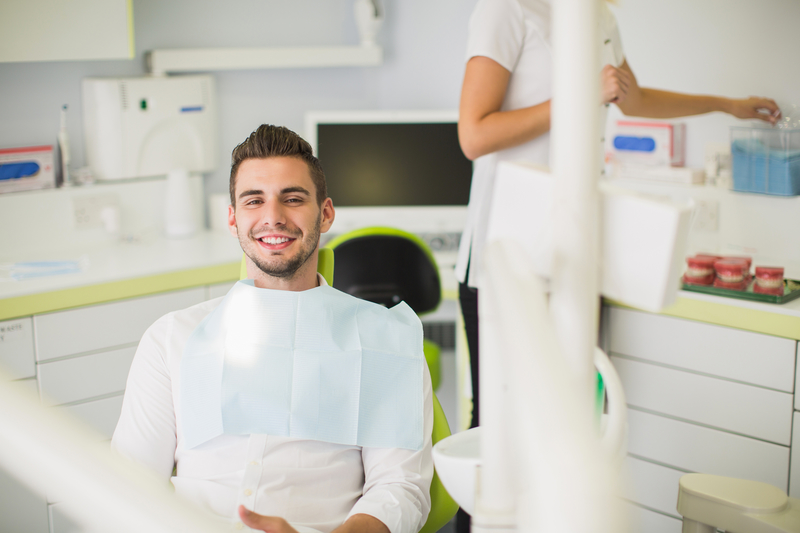
Studies show that not enough Americans are taking good care of their teeth, especially through dental and orthodontic treatment. The advanced technology available today is what allows patients to keep their natural teeth healthy for life and is something that millions in the world don’t have access to. Find out why oral health services such as orthodontic treatment is so important to patients and something to be thankful for this time of year!
Your Oral Health
When you think of the most chronic conditions and diseases that plague people today, you may not think of cavities as being one of the them. The National Institutes of Health reports that tooth decay—or cavities—are the most “chronic, prevalent disease” among American children and adults. In fact, about 92% of people have tooth decay by the time they reach adulthood. In all age groups, roughly between 20% and 25% of people have untreated decay they are not aware of.
What does tooth decay have to do with orthodontic treatment? This decay can happen to anyone at anytime and you are more likely to have tooth decay during your orthodontic treatment. Many patients opt for lingual, ceramic or traditional metal braces to straighten their teeth. These methods require brackets that are bonded to the teeth with wires that pass through those brackets. Even though these appliances are highly effective for providing beautiful straightening power, they can make it harder to clean your teeth. Because it’s harder to clean them, and some patients don’t take the extra time to do this, you can end up with tooth decay. That adds to that 92% statistic.
The best way to eliminate your risk for that tooth decay (as well as other oral health diseases), is to properly care for your teeth both with and without braces. That involves brushing your teeth at least twice a day for 2 minutes at a time, as recommended by the American Dental Association. When you have braces, you have to do this after every meal to avoid acidic plaque buildup, which happens when your food and drink sugars mix with mouth bacteria. With braces, threadable floss to go around brackets and wires is generally needed, as well as cleaning items such as a waterpik (water shooter) tool and a proxabrush for brackets. Your oral health can be stellar during orthodontic treatment with the right oral hygiene.

How Does the U.S. Compare?
Orthodontic treatment is a time when those in the U.S. can have a greater risk for developing cavities. This comes from a lack of oral hygiene during your orthodontic treatment period. However, the world at large is battling oral health diseases and poor dental and orthodontic care on an epidemic scale. The World Health Organization reports that cavities (tooth decay) and gum disease (periodontal disease) “have historically been considered the most important global oral health burdens”.
60%-90% of people worldwide have tooth decay and oral diseases connected to this condition. Children are affected the most, but statistics are almost as high in adults worldwide. Even though the U.S. is at a high percentage when it comes to tooth decay (92%), the presence of tooth decay is generally eliminated in most of the population through proper dental work and access to dental services. In the majority of other countries—especially underdeveloped ones—dental or orthodontic work is not a possibility for most. Oral health diseases are simply left untreated or the teeth are pulled when they become too painful.
The Connection to Orthodontic Treatment
Getting a cavity or having an oral health problem during your life can definitely be avoided, but most people will have some sort of oral problem, even if it is small. There are ways to prevent those problems such as proper brushing and flossing every single day. A great way to reduce your risk for oral health diseases is through orthodontic treatment. For children, this is known as child orthodontics. The American Association of Orthodontics recommends that children have their first orthodontic appointment between age 7 or 8.
This is a time when baby teeth are starting to fall out and adult, permanent teeth are starting to come into the mouth. Proper examination by an orthodontist can sport bite and alignment issues that are developing in children. When these issues occur, the teeth can come in crooked all over or they may not rest in the position they are supposed to. This can lead to speech impediments, many dental emergencies and broken teeth in the future from uneven dental pressure, higher instances of tooth decay and gum disease, and problems with oral health diseases.
Orthodontic treatment when young can help align the teeth and jaws to prevent oral problems as a child grows. When teens and adults receive orthodontic treatment via braces, they can better straighten permanent teeth when they come in. This sets everything straight and functional before the jaws harden in adulthood. Straight teeth and aligned jaws make it so cleaning the teeth becomes almost effortless. The risk for tooth decay and gum disease is also significantly lower.

Be Thankful for Your Orthodontic Treatment
Dentistry and orthodontic treatment helps diminish the presence of oral diseases.Yes, tooth decay and gum disease happen frequently due to poor oral hygiene habits. However, orthodontic treatment can help prevent those problems in the first place. Great oral care can prevent developing problems throughout your life. Even when these issues do happen, you won’t have to simply get your teeth pulled or let them decay and fall out of your mouth.
You have great orthodontic and dental options in the United States that allow you to keep your teeth, while many people across the globe have to lose them. Remember that the next time you think about skipping your oral care appointments. To reduce your risk for oral health diseases, you can call Belmar Orthodontics at (303) 225-9016 and ask about your orthodontic treatment plan.
Foods and Drinks that Harm Your Teeth

Did you know that what you’re drinking might be hurting your oral health? Many patients experience problems like tooth erosion and thinning without realizing that the problem is what they’re eating. Use this guide to know the effects of foods and drinks on the teeth and what to watch out for!
Wear and Tear on Your Teeth
Your teeth are made of tightly-packed minerals that keep them strong and healthy. Those include calcium, phosphate, magnesium and more. Your saliva helps break down your food and helps to remineralize your teeth each day. Eating certain foods and drinks can strip minerals from your teeth slowly over time, making them weak, sensitive and thinner. These are common oral health problems with age. However, thinning (or enamel erosion) and sensitivity usually come from a lack of oral hygiene. If you enjoy a daily soda or you love your sweet treats throughout the day, you may be weakening your teeth at a rapid pace.

Foods that Cause Damage
Some foods build up your tooth enamel and help it, like dairy products helping to remineralize calcium. Others—like sugar—tear it down. Avoid these foods to keep your smile healthy:
- Anything Citrus: This includes both foods and drinks. Citrus fruits (lemon, lime, orange, etc.) and drinks contain citric acid. This is there naturally or as an additive to maintain flavor. Any type of acid on a label will erode your teeth if you ingest it.
- Sugar: Sugar mixes directly with mouth bacteria to form a sticky film called plaque. That plaque sticks to teeth and causes decay. Because it’s acidic, it will work on your teeth to erode and decay them. The more sugar you eat, the more plaque your mouth makes, and the more erosion and decay you get. This is especially true while wearing braces.
- Hard Candies/Mints: Any candy or mint you suck on (like a sucker) exposes your teeth to sugar constantly, which leads to decay from plaque acid.
- Chewy/Sticky Candy: Any chewy/sticky consistency is destined to get stuck in brackets and wires. It also sticks like glue to the teeth if they’re not brushed properly.
- Starchy Foods: Breads, cookies, crackers, pasta and anything starchy will get stuck in your teeth. All of these quickly break down into sugar, which can affect your teeth and your overall health.
- Popcorn: Popcorn and hard foods like nuts, hard veggies and fruits and non-food items can be bad for your teeth with braces, as they can break your orthodontic appliance. Limit them to avoid orthodontic emergencies.
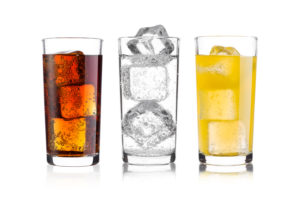
Drinks to Avoid
Drinks can be even more damaging than food in many cases. That’s because you can drink all day long, and if your drink is acidic, those acids stay on your teeth up to 30 minutes. Soft drinks (soda/sports drinks) are notorious for high sugar content. That sugar can create tons of plaque in your mouth that causes decay. As we mentioned, that combination is acidic. Every time you drink, your are making plaque that can weaken your teeth.
Avoid these drinks that are acidic, sugary or can stain:
- Soda: This contains carbonic acid, which comes from a chemical reaction between carbon dioxide and water. It stays acidic on your teeth for up to 30 minutes. Most sodas are incredibly high in sugar, which means they are doubly bad for you.
- Energy drinks, etc.: Energy drinks, sparkling water, and any drink of the sort that contains carbonic acid. Avoid drinks with fizzy bubbles or limit their contact with the teeth by drinking through a straw.
- Sports Drinks: These drinks are often full of sugar, plus citric acid to maintain flavor. Avoid them and stick to water.
- Water Enhancers: Water-flavoring liquids or powders generally contain citric acid to maintain flavor. Even if the substance is clear, the acid will still erode teeth even if the drink isn’t staining them.
- Alcohol: Many contain carbonation (carbonic acid) and all will kill nerves in your mouth, leading to loss of feeling over time.
- Coffee: This drink, tea, wine and anything with blue, purple or red pigments will stain the teeth. If you teeth are eroding over time, the dyes get into small cracks in the teeth, changing tooth color rapidly.
Damaging Habits that Harm Your Teeth
If you want to have your teeth for life, you have to take care of them. You have to try even harder to care for them when you have braces. More than 4 million Americans are wearing braces each year. Some opt for Invisalign aligners, which are removable and which make cleaning the teeth fairly easy. However, many patients—especially children and teens—wear lingual, traditional metal or ceramic braces. All of these types of braces have brackets bonded to the tooth surface and wires that hold them in place.
If you don’t brush and floss like normal, your teeth can decay, erode and you can have problems with both gingivitis or severe gum disease. Your teeth can weaken and break easy and they can fall out. That’s why you want to have meticulous oral hygiene all throughout life. Proper brushing, flossing, visiting the dentist or orthodontist, and using oral health products like mouthwash and fluoride can all help you keep your natural teeth healthy.
With braces, you can have your teeth become thin and weak based on what you eat, or they can decay and change colors based on how you care for them. You can definitely harm your teeth if you’re not cleaning your brackets, wires and teeth several times a day. Good oral hygiene care is vital to having a healthy and beautiful smile at the end of your treatment. An easy step to avoid problems is to avoid the foods and drinks we listed above. Be even more careful about those foods and drinks with braces. For specific questions about certain foods or drinks, or help for proper braces care, call Belmar Orthodontics today at (303) 225-9016!
Avoid These Sweet Treats at Halloween with Braces

Halloween can be an incredibly fun time for kids and adults alike. However, the not-so-fun part is developing cavities later on because of that Halloween candy. Sugar is directly related to tooth decay, but it’s even worse if you have braces on your teeth. There are specific candies you should try to avoid if you have brackets and wires, as they can get stuck easier. Find out what these are and tips to reduce your risk for tooth decay during the holidays!
How Popular Is Halloween?
About $2.4 billion dollars is spent in Easter candy each year. However, Halloween candy is a close second at around $2.1 billion in sales. Divided up into individual households, that’s about $44-$47 dollars spent on Halloween candy in each household.
If you think Halloween candy sales are scary, here are the facts on the actual candy consumed on Halloween day itself:
- Almost all children and at least ½ of all adults eat candy on Halloween day.
- However, the amount of candy consumed is well-past the recommended 6 or less teaspoons children should have in a day. Adults should only have between 6 and 9 teaspoons of sugar (tops) per day. On Halloween itself, up to 3 cups of candy is consumed per child.
- That equates to about 48 teaspoons of sugar per cup, or about 144 teaspoons of sugar, or 675 grams of sugar in one day.
- USA Today reports that 4% of all the candy eaten in the U.S. is eaten on Halloween day.
- Reader’s Digest reports that the amount of calories children and adults alike eat on Halloween equals anywhere between 3,000 and 7,000 calories.
- Not only can this much sugar lead to incredible health problems and diabetes, but sugar—the main ingredient in that candy—is the direct cause of tooth decay.

How Can Candy Hurt Your Teeth?
Candy is damaging to your teeth because of the sugar, which is a direct factor in your risk for tooth decay. The more sugar you eat, the more cavities you could get. When you eat or drink, sugars in food will mix with certain bacterias in your mouth. That mixture will create a sticky substance called plaque. You can’t simply swallow that plaque either. It sticks to your teeth and becomes an acidic substance when it mixes.
Because it’s acidic, as it sticks to your tooth enamel like a film, it will work to erode and decay your teeth. It does this by breaking up the minerals that make up your tooth enamel layer. If you don’t brush and floss your teeth often enough, or you eat a ton of sugar, you have plaque working hard on your teeth to destroy them.
Plaque can decay your tooth surface to create surface cavities. If enough decay happens on that layer, it can get through to the inner layers of the teeth, causing internal (and sometimes large) cavities that can turn into infections and tooth loss. Sugar is the main food for plaque, which is why candy—whose main ingredient is sugar—can hurt your teeth.
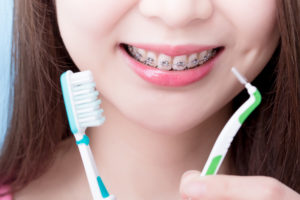
Avoiding Specific Sweet Treats with Braces
Anyone can get cavities and other oral health problems from a large candy or sugar consumption. You don’t only have to worry about candy either when it comes to cavities—you have to worry about all foods. Most foods you can buy at the store have added sugars in them. That includes juices, sports drinks, and sodas, as well as the obvious sugar foods like candy, cakes, ice cream and cookies. Always check food labels to see how much sugar a food contains.
There are specific foods you want to avoid if you wear braces, as those foods and candies can make it much easier for you to get cavities. Especially at Halloween, popular candies are ones that are chewy and sticky. Anything chewy and sticky will get stuck in your brackets and wires if you wear lingual, ceramic or metal braces. Sweet treats you want to avoid if you wear braces include:
- Gum: Gum is made to be elastic and sticky and can stick to brackets like crazy. Avoid it completely with braces. After your braces are off, chew sugar-free gum.
- Chewy/Sticky Candy: Examples include caramels, taffy, Tootsie Rolls, Starburst, licorice, Skittles, Sugar Daddies and any candies that are similar. Avoid fruit snacks, gummies and dried fruit as well, which are all incredibly sticky.
- Hard Candies: These go hand-in-hand with suckers and mints. All of these candies expose your teeth to sugars for prolonged periods of time, which means a prolonged risk for acidic plaque and tooth decay.
- Sodas/Citrus Drinks: These and any carbonated drinks all contain either citric acid or carbonic acid, which erode the teeth. That can mean you have tooth erosion and decay all around your brackets, which will be very noticeable when your braces come off.
Enjoy Some Sweetness This Halloween
When it comes to Halloween, we want all of our patients to have fun and to enjoy the holiday. Candy is naturally a part of that holiday, but it doesn’t mean that you have to experience tooth decay in the weeks following it. Every person needs to be conscious of their candy consumption on Halloween to avoid tooth decay, erosion and health problems in general.
You don’t want to work hard for 18-24 months getting a straight smile if it’s decayed when your braces finally come off. Enjoy your Halloween sweet treats, but be mindful of your oral health. Brush your teeth 3 times a day or after every meal with fluoride toothpaste. Floss your teeth at least 1-2 times a day. Avoid sticky and sugary treats and clean the teeth very well if you do eat them at Halloween. Avoid acidic drinks and watch your sugar consumption. For tips on cleaning your teeth correctly with braces to avoid tooth decay, call Belmar Orthodontics today at (303) 225-9016!
Dental Services You Need During Braces
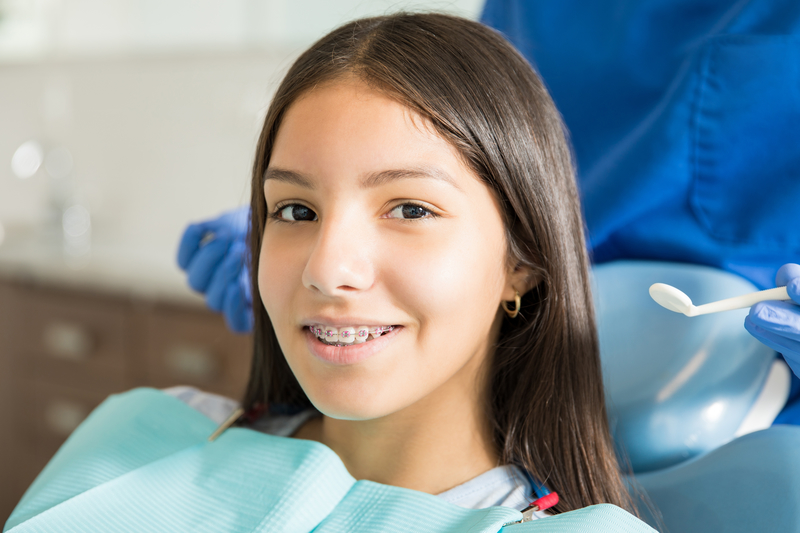
Getting braces through an orthodontist does not mean you should stop seeing a dentist for dental services. In fact, you may even need to get dental services more often with braces. This is because brackets and wires inevitably raise your risk for getting food and plaque stuck in your teeth. Those substances can then lead to quicker tooth decay, gum problems and tooth erosion. Find out what you can expect from your orthodontic visits and why you should keep scheduling in dental services during your treatment.
How Do Braces Change Your Teeth?
Not everyone will get braces during their lifetime. However, for those that do, they can change a smile in incredible ways. You may see children wearing braces from time to time. This is just so they can get a great smile, but that is part of it. Children should see the orthodontist around age 7 or 8 to determine if bite or alignment issues are present. If so, a child could grow up with speech impediments, problems with tooth decay and gum disease, and difficulty chewing, eating and biting. With interceptive orthodontics—or child orthodontics—we can correct those problems so a child develops properly.
With adults and teens, straightening treatment generally starts around age 11 or 12 and older. This is when most (if not all) of the adult teeth have come into the mouth. However, it’s common for the adult teeth to come in crooked, which can make people self-conscious about their smiles. When patients decide to get braces to straighten their teeth, studies show that confidence grows and people show their smiles more. That confidence can lead to more success in the future, motivation to do more and be more, and better oral health.
Straightening the teeth makes the teeth easier to clean. This is because crooked teeth can create areas in the mouth where the teeth are incredibly hard to clean. If you can’t brush nooks and crannies well or if you can’t pass floss through the teeth, those areas are likely to decay. Teeth that are crooked or at different angles also have different amounts of pressure placed on them, which can cause the teeth to crack or break under pressure. That is why straightening the teeth can help prevent not only dental emergencies, but also problems like tooth decay and gum disease.

Changes You Want to Avoid
With your dental health, you always want to invest in dental services like dental cleanings, comprehensive exams and your own at-home cleaning. If not, you can start to develop problems with cavities and gum disease. Both of these conditions (as well as bad breath, oral sores and more) stem from poor oral hygiene. When you eat, bacteria in the mouth mix with sugars in your food to create a sticky film called plaque. That film is acidic and it sticks to your teeth instead of being swallowed. The acid erodes the layers of your teeth, decaying them to create cavities. This is how they form, and they can happen much easier with braces.
Three types of braces you can choose (traditional, lingual, ceramic) will require brackets and wires attached to your teeth. The brackets are bonded to the center of your teeth, with a wire that runs through them. Your brackets are areas where plaque and food can easily get stuck. If they become stuck or particles build up around your brackets, this can create areas of decay rather quickly. Many people also don’t floss like they should with braces because it takes just a bit longer. However, when food sticks around and you skip flossing, you are leaving about 40% of your tooth surfaces open to decay. That means, when you get your braces off, you’ll be left with areas of tooth erosion (or craters) and cavities.
You also want to avoid foods with dyes in them, including drinks. When you drink or eat something with dyes (like blueberries, strawberries, blackberries and drinks died those colors), then your tooth color can change over time. This could mean that you have small squares on all of your teeth at the end of treatment that are a different color than the rest of your teeth. Soda, juices and carbonated drinks can all do this as well, except that they will also wear away parts of your teeth.
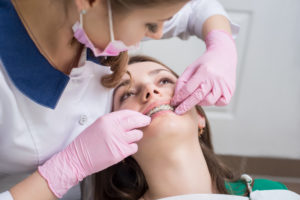
Continue Dental Services During Braces
All of those changes to your teeth can be avoided if you keep up on your personal hygiene at home and dental services in-office. This means, you should:
- Brush your teeth every single day, after every single meal, for two minutes each time you brush. Practice brushing at 45-degree angles to dislodge food from brackets and cover all the tooth surfaces. Use a proxabrush to dislodge stuck food even easier.
- Floss each day, at least 1-2 times. Use a floss threader or threadable floss to make this easy for you.
- Use a waterpik tool if you tend to get food stuck in specific places.
- Keep up on your braces adjustments and your orthodontic appointments.
- For dental services, make sure you visit the dentist at least twice a year for comprehensive exams and dental cleanings.
We want to focus on that last one. Dental cleanings and comprehensive exams are so important for the health of your mouth. With dental cleanings, the hygienists can do thorough cleanings on your teeth and brackets and spot the signs of erosion, decay and color changes. Those professionals can spot the signs of decay and gum issues. If needed, we can work with them to remove certain brackets where dental work is needed. Orthodontists and dentists are not the same even though they have had the same schooling. Make sure you are visiting both during your time with braces. If you want to avoid problems with cleaning brackets and wires, ask us about our Invisalign treatment option. You can do this by calling Belmar Orthodontics at (303) 225-9016!
Fun Facts About Orthodontics
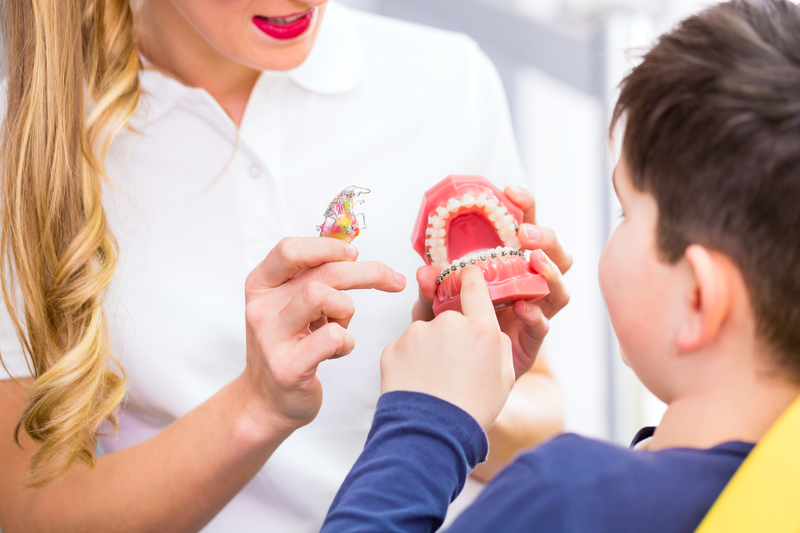
Did you know that an orthodontist is different than a dentist? Orthodontics is a dental specialty all its own, that has different goals and processes than what dentists do. There are many ways to fix the teeth and many methods that have been tried for many centuries. Find out the amazing history of orthodontics and some facts you may not know!
History of Orthodontics
People have been straightening their teeth since the time of the Ancient Egyptians, as can be seen from mummies from this era. Even the Romans and Etruscans used crude orthodontic straightening methods to get a better smile. Many philosophers hypothesized better ways to straighten the teeth. A Roman writer Celsus (1 A.D.) thought the teeth could be pushed into place. Pliny—around the same time—thought the teeth could be filed to be the ideal shape and size.
It wasn’t until 1728 that Pierre Fauchard—or the “Father of Dentistry”—made great strides with orthodontics. He first practiced crudely removing the teeth, replacing them straight, and tying them to other teeth so they could heal straighter. From his influence and others after him, modern orthodontics came to be. Matthaeus Gottfried Purmann developed dental impressions in the 17th century. In the early U.S. years, barbers and medical professionals experimented and performing small orthodontic treatments. This was until the first dental school was established in 1828.
Afterwards, J.S. Gunnell invented a form of headgear that was successful in straightening the teeth. Dental students and professionals figured out how to make a metal appliance to straighten individual teeth, which led to the now-used bracket and wire design in modern orthodontics. Before 1970, orthodontists wrapped wires around each tooth and required that headgear to straighten. This practice involved lots of metal in the mouth, which is why a better form (that we use today) was invented in the following years. Now, in the last 20 years lingual braces (braces behind the teeth) and Invisalign (transparent aligners) were invented to allow patients a hidden apparatus with orthodontics.
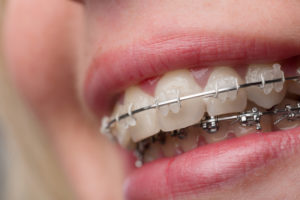
What Do Orthodontists Do?
Did you know that orthodontists are dentists? Every orthodontist is a dentist because they have completed dental school and then some. However, not all dentists are orthodontists. The standard requirements for dentists are to complete 4 years of undergraduate schooling and then 4 years at a dental school. They will have to pass exams and become certified to do dental work. Orthodontists do all of those 8 years, plus they complete 2-3 more years of orthodontics, training in bite and alignment correction and surgical orthodontics. All throughout their career, both dentists and orthodontists must do continuing education courses as well as pass tests to continue working.
An orthodontist will not fix your cavity even though they may spot the signs of tooth decay. Often, an orthodontist works closely with a dentist, as both professionals work on your mouth. What one professional doesn’t do, the other will do. Dentists do everything relating to tooth decay (cavities), gum disease and other oral health diseases as well as remedying dental emergencies. An orthodontist performs services that a dentist doesn’t do such as:
- Bite and alignment correction in children and adults (child orthodontics and adult orthodontics)
- Surgical orthodontics, which is surgery to help remedy a misaligned jaw or bite.
- Braces design, fitting, adjusting and complete process with lingual braces, ceramic (clear) braces, traditional metal, and Invisalign treatment.
- Training in placing temporary anchorage devices, which are tiny screws in the mouth that push, pull, lift or intrude teeth that are being straightened.
- Designing and creating retainer devices to keep bite, alignment and teeth in proper position.
Facts About Braces
- An orthodontist must complete 4 years of dental school, plus 3700 hours or specialized training in orthodontics to get their degree.
- There are more than 19,000 orthodontist members under the American Association of Orthodontics in the U.S., Canada and abroad.
- 1 in 4 people with braces are adults.
- Children make up another 1/4th of people wearing braces to correct bite and alignment.
- Because of modern technology, all four of your dental options (lingual, metal, ceramic and Invisalign) can straighten your teeth in about the same amount of time.
- It is possible to only get braces in either your upper or lower jaw if the other jaw is straight.
- The jaws stop growing as a child ages. That growth stops towards the end of the teenage years around 17 or 18. Straightening the teeth is effective for people after this age, but it may take longer than it would for children.
- Patients generally see their orthodontist every 6-10 weeks for braces adjustments. Patients with severe bite and alignment issues may need to come in more often.
- Orthodontists often usually have “DDS” or “DMD” after their names. This stands for “Doctor of Dental Surgery” and “Doctor of Dental Medicine”. Both are considered equal degrees, but the degree given depends on the dental school attended before orthodontic training.
- Materials used in metal braces are so light that they won’t set off metal detectors in airports.
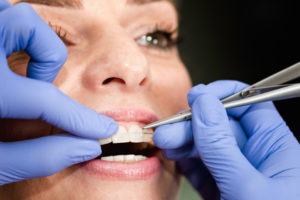
How Do Orthodontics Help People?
If you’ve never been to an orthodontist, you may wonder why you need one. Not everyone may need orthodontics to correct bite and alignment issues, but everyone should see an orthodontist at some point. The American Association of Orthodontics recommends that every person have an orthodontic visit between ages 7 and 8. This is prime time to detect bite and alignment issues that would lead to crooked teeth, speech impediments, oral hygiene diseases, and problems chewing, biting and functioning normally.
When issues are found, they can quickly be corrected so children can grow and develop normally. If a teen or adult wants to straighten their teeth to boost their confidence and success, they can receive braces starting around age 11. For specific questions about our orthodontic services, call Belmar Orthodontics today at (303 225-9016!
How Bite Correction Can Change Your Life?
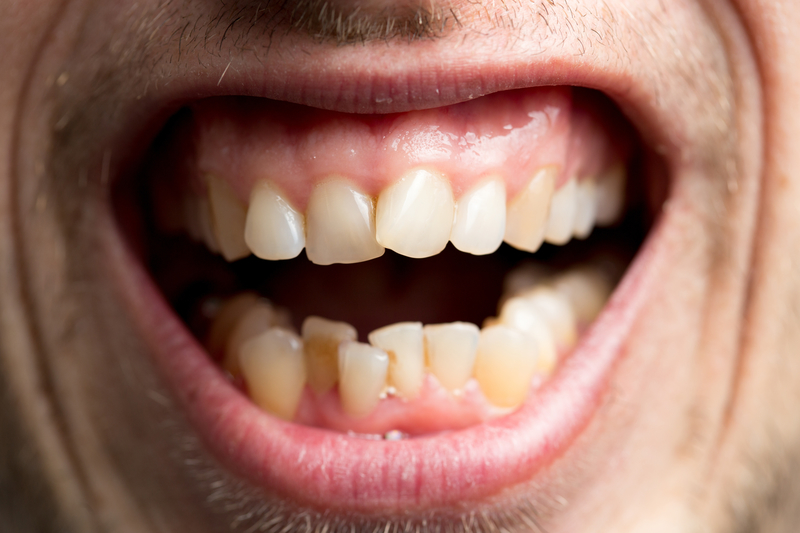
Do you or your child have a problem with their bite or alignment? These problems can seem small at first. However, as a child grows into an adult, bite or alignment issues could cause many health problems. It can even cause speech impediments and difficulty chewing in the future. Find out how bite correction can improve your health and just how important it is to get bite correction via braces if you need it!
Your Bite Should Be a Certain Way
The structure of your mouth is defined by how your teeth and jaws are formed. Your upper jaw and your lower jaw should both follow the same arch in a U shape. Those arches should also line up together. The teeth as well, should lie on top of one another evenly, with your back top molars resting on your back bottom molars all the way towards the front. In a normal bite, the front top teeth will rest on top of your bottom teeth, except they will be just slightly in front of those bottom teeth.
Orthodontic care is not just for teens that are looking to get a straighter smile. In fact, about 1/4th of all people that wear braces are actually children! The American Association of Orthodontics recommends that children have their first orthodontic visit between the ages of 7 and 8. Having an examination early-on helps prevent the progression of orthodontic issues, such as a misaligned bite. How a child’s mouth is forming is a great indication of what their mouth will look like as an adult. If we can already see that their teeth are growing at the wrong angles, or that their jaws don’t line up, we can predict that oral health issues will be present in the future. That is why having this orthodontic appointment at 7 or 8 is so important.
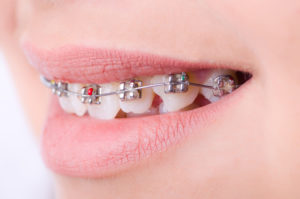
Types of Bites
When a child comes in to have their mouth examined, we can see how the top and bottom jaws line up. In a mouth with correct bite formation, the jaws will line up. If they do and the teeth are not coming in at crooked angles, then a child won’t need orthodontic care unless they want to straighten their teeth later on in life. However, prompt treatment will be needed for alignment and bite correction if a child or older patient has:
- Overbite – The upper front teeth overlap too much over the bottom front teeth.
- Underbite – The upper front teeth rest behind the bottom front teeth.
- Crossbite – Teeth are at varying angles in the mouth, which can lead to decay, broken teeth and speech problems.
Benefits of Bite Correction for Children
The ideal time to receive any treatment for bite correction is during the childhood years. This is when the mouth and jaws are still growing. Because the bones aren’t set yet, it is much easier for an orthodontic appliance to mold a bite into the correct shape without too much effort. This is generally why a child would receive bite correction treatment before they are 10 years old.
If a child receives bite correction via braces, they benefit from their mouth forming correctly. Where there were once speech problems developing, their speech can start to sound normal without lisps or other impediments. Facial features will appear more normal because the structure of the mouth will be maintained with orthodontic appliances. In a child with severe bite problems, some people can physically see parts of the jaws jutting outward. This makes the face look different than it should, and speech will almost certainly be compromised. We stop that incorrect shaping before the jaws harden later on and before dental diseases and problems are developed.
Even if you don’t detect any dental issues with yourself or a child, there are still many advantages for bite correction and braces at an early age such as:
- Observing the progress of incoming teeth
- Monitoring facial and jaw development
- Guiding incoming teeth into their ideal position
- Detecting hidden dental issues
- Reducing the risk of impacted teeth
- Decreasing the risk for permanent tooth extractions (as teeth won’t get uneven pressure that breaks them)
- Reducing the risk of cavities and gum issues that happen when the teeth are crooked and harder to clean
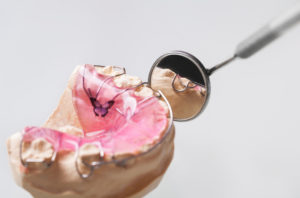
Benefits of Bite Correction for Adults
If you didn’t receive orthodontic care as a child, it is not too late to receive it later on in life. Adults and teens make up the other 3/4ths of patients that get braces. At about age 11 or 12, most of the permanent teeth should be in the mouth. At this time, we can look at a patient’s teeth and see if they need their teeth straightened. When bite problems are present (because child orthodontics was not done), it is harder to do them as teens and adults, but it can be done with normal orthodontic appliances. In some cases, some surgery may be done to reshape areas of the mouth that have hardened into place.
However, the benefits of bite correction and tooth alignment for teens and adults is astounding. Studies show that people perceive you as more successful, healthy and happy if you have straighter teeth than if you have crooked teeth. You’re more likely to get a job over someone that has crooked teeth, because your smile is an expression of your health and how well you care for yourself. That can translate into how well you care for other things, like your obligations.
Studies show that in adults and children alike, that confidence soars and smiles are shared more often when people feel good about their smiles. That confidence boost can change your entire outlook on life, and can lead you to be a more successful person than you otherwise could be. If you have teeth in need of bite correction or straightening, don’t hesitate to see what orthodontic care can do for you! Call Belmar Orthodontics today at (303) 225-9016!
Get Your Braces in Time for Back-to-School

Going back to school can be an exciting time whether you’re a child, teen or an adult. However, if you have recently had your braces put on or plan to get them before school starts, there are some things you should prepare for. Those include planning ahead so that you can clean your teeth at school, that you have food you can eat with braces and more. As you go back to school this year, use these tips for taking care of your braces and for showing them off to your peers!
Should You Get Braces?
Many people see braces and try to decide if they are right for them. Receiving orthodontic care does take time, but it’s time well spent. Most patients are generally wearing their orthodontic appliance for 18-24 months at a time. However, you can achieve a straight smile that will last you the rest of your life.
There are incredible benefits that come with getting braces, and we’re not just talking about getting straighter teeth. Braces can correct a patient’s problems with bite and alignment. These types of problems can create speech impediments over time and can make it difficult for patients to bite, chew, smile and more. Add crooked teeth on top of that, and the teeth also become much more difficult to clean. When they are more difficult to clean, patients generally miss cleaning areas that eventually decay. Without orthodontic treatment, you raise your risk for tooth decay and gum disease, as well as dental emergencies. Crooked teeth and bite problems can lead to broken and cracked teeth over time.
However, braces can get rid of all those risk factors that lead to chronic dental problems. And you don’t really have to do much except keep your braces clean! Studies also show that people who straighten their teeth tend to smile more, and they actually have a major confidence boost that stays with them. Going back-to-school is a great time to get that extra confident boost!
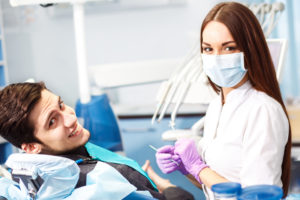
Choosing Which Braces You Want
In the past, patients only had one dental option. Today, you have at least four options. At your consultation, you can learn about and choose from these options:
- Traditional Metal Braces: The metal brackets and wires many people think of when they think “braces”. The metal brackets attach to the front of every tooth and are held in place by a metal wire that goes along the bottom and top teeth. The molars have metal bands that go all the way around the tooth in the back to keep the braces very sturdy.
- Ceramic Braces: These are designed just like traditional metal braces, but they are made from white, ceramic material to blend with the teeth. Even the wire can be made white for patients.
- Lingual Braces: With Incognito Lingual Braces, you can achieve the same results as traditional braces with a hidden treatment apparatus on the tongue-side of your teeth. These braces consist of metal that is custom-molded to fit on the back of all your teeth. The metal covers the entire back instead of simply consisting of a bracket. However, there is still a small bracket that holds the metal wire in place. The main advantage of lingual braces is that they can straighten and correct bite problems without being seen.
- Invisalign: This treatment consists of transparent aligners custom-made for a patient’s teeth that they switch out every week. Over time, crooked teeth become straight. The aligners can be removed for any activity (eating, brushing, sports), however, they can’t correct major bite issues.

Watch What You Eat
With any new thing, there is always a learning curve. Braces are no different. For the first few days, your mouth will have to adjust to having an orthodontic appliance attached to the teeth. The newness of your braces will fade, but the need to take care of them won’t fade. One of the main things you need to watch out for with braces is what you eat. Many students get lunch from the cafeteria, snack bars, or fast food places. If this is you, be careful what you eat and aim to avoid foods such as:
- Hard candies: These generally contain lots of sugar and chewing on them can break brackets and wires.
- Avoid hard foods such as nuts, chips, popcorn (because of kernels), apples, crusty bread, carrots or hard vegetables.
- Ice: Never chew ice, as this can break orthodontic appliances and can crack or break a tooth. Always suck on ice; never chew.
- Sticky Sugary Foods. These include caramels, taffy, licorice, Tootsie Rolls, Starburst, Sugar Daddies, Skittles and candies that are similar.
- Gum: This gets stuck in all your orthodontic appliances and most are sugary, meaning that stuck food will be able to sit on your teeth and eat away at your tooth enamel.
Nobody wants to get back-to-school and have a dental emergency happen. If you always watch what you eat, you don’t have to worry about dental emergencies and serious oral health issues.
Get Your Braces in Time for Back-to-School
Do you want to make an amazing transformation this year? Start with your smile! Your smile is one of the first things others notice. You want to make that smile shine. For the perfect smile you are envisioning, we can help make it a reality! Simply call Belmar Orthodontics today at (303) 225-9016 for your free consultation!
Help for a Chipped, Cracked, or Broken Tooth with Braces

Your teeth are made up of 96% mineral content, making them the hardest substance in the body—even harder than the bones! However, that doesn’t mean that you won’t ever end up with a chipped, cracked or broken tooth. These are major dental emergencies that can cause you to permanently lose teeth if you don’t get dental attention right away. Find out what each of these emergencies are and what to do about them!
What Constitutes a Dental Emergency?
Each year, millions of people sustain mouth injuries that result in dental emergencies such as a cracked, knocked-out or broken tooth. At least 5 million cases of knocked out or broken teeth are reported each year, most of which happen during sports. Not enough athletes wear mouth guards for their teeth, which is why sports is one of the highest causes of dental emergencies.
Injuries to the mouth can be devastating not only to how a smile looks, but can be devastating to your gum tissue and teeth. A cracked, chipped, knocked-out or broken tooth can quickly result in dental infections or complete tooth loss in the affected area. Dental emergencies include toothaches (especially severe), severely chipped teeth, a chipped filling, broken crown or implant, a cracked tooth, knocked-out tooth or a broken tooth.
When it comes to braces, dental emergencies also include broken brackets or wires, pokey wires, a cut lip, cheek or gum and a loose or missing elastic tie. If a dental emergency happens with braces, it can severely cut up a patient’s gum tissue. That is why mouth guards are so important in sports if a patient has traditional metal braces, or lingual or ceramic braces.
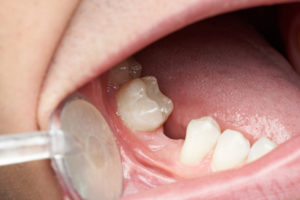
Chipped Teeth
A chipped tooth is only a dental emergency if the chip is large enough that it has displaced a filling or broken a dental appliance. If you have chipped a tooth or a filling but you feel no pain or tenderness after the chip has happened, it is probably not an emergency. However, when you can’t see the chip (because it was a filling), and there is tenderness, it is because a dental nerve is being exposed or dental decay was underneath the filling. You can fix a chipped tooth even with dental appliances such as brackets on your teeth.
How Serious Is a Cracked Tooth?
A cracked tooth is different than a chipped tooth, and much more serious even if you can’t see the crack. You can easily crack a tooth by eating the wrong foods depending on how hard your teeth are. Even though your teeth are very hard, the right amount of force can cause a cracked tooth. You can do this much easier if your eating habits (sugary foods and acidic/carbonated drinks) give you weaker tooth enamel. Patients are supposed to avoid hard foods with braces such as nuts, popcorn, hard carrots, apples, chips and similar foods. Poor oral hygiene or tooth decay during braces as well can lead to weaker teeth, meaning they may crack easier.
A cracked tooth actually is a serious dental emergency. A crack can continue to grow and can go all the way down to the tooth root. If you have a tiny line but no tenderness, it could just be an enamel crack. If you fracture a piece of your tooth off, it’s called a “fractured cusp”. This usually doesn’t cause much pain. Most cracked teeth fracture a tooth vertically towards the root, which leaves it open for quick infection. A root fracture is even more serious, as you will lose your tooth completely if you don’t get dental help asap.
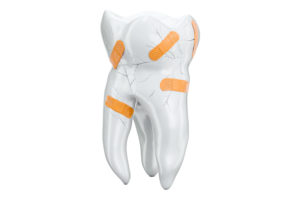
A Broken Tooth Is No Joke
A broken tooth can happen with or without braces on the tooth. If you have braces, you can end up with not only a broken tooth, but a cut gum or cheek if you’ve been hit in the face. The teeth can break off right at the gumline or can fracture a section off. Even if you break half of your tooth, your tooth root can be saved. If you have a dental emergency such as a knocked-out or broken tooth, get dental attention immediately. This is vital if you want to keep your natural tooth.
If you have brackets on your teeth at the time of the dental injury, make sure to call us right away. We may have to work with a dentist to remove your dental appliances so your restorative dentistry can be done. Right when a tooth break happens, save the part of the tooth that broke. Place it in a cup with water or milk and make sure to rinse your mouth well with warm water. Apply pressure with gauze or a cloth to the affected area. Couple this with a cold pack outside your mouth on the cheek to keep swelling down. Never handle your broken or knocked-out tooth more than you need to and never hold it by the tooth root. Call the dentist and orthodontist right away.
Avoid Dental Emergencies
Nobody wants to experience a dental emergency, especially if they have braces on their teeth. These can make dental emergencies so much worse. However, you can avoid a dental emergency with braces altogether. Wear mouth guards with every sport you play, even during practice. Take braces wax with you in a small pack so you can cover pokey wires or brackets. There are also tooth-saver kits that are small and can be carried with you if you ever have a knocked-out or broken tooth.
Eating hard foods should be avoided as well. Not only can you end up with a broken tooth or other dental emergency, but you can break a bracket or wire. If you have a dental emergency and wear braces, call Belmar Orthodontics at (303) 225-9016 to get the help you need!

